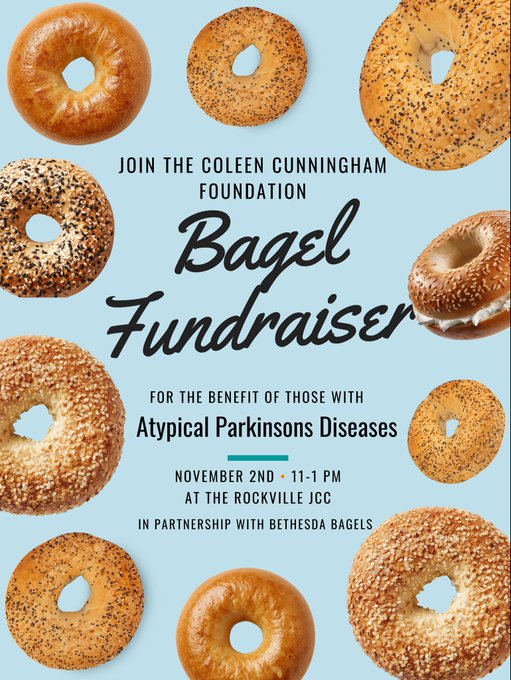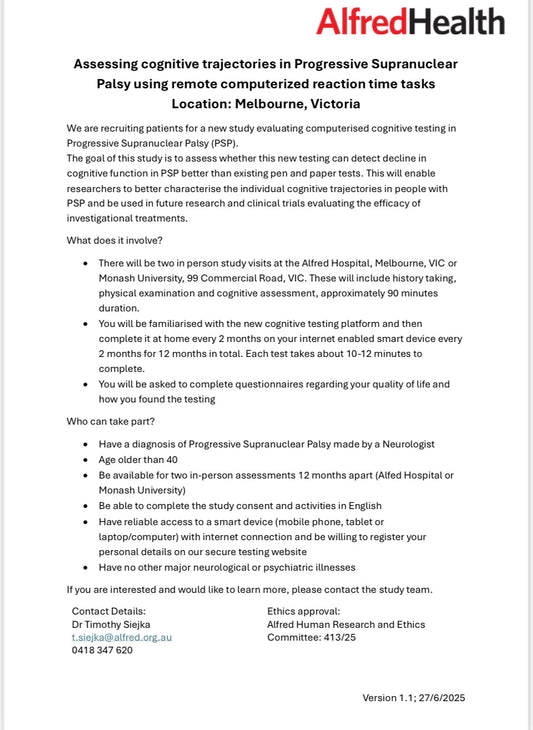Progressive Supranuclear Palsy (PSP) is a complex neurological disorder that affects each individual uniquely. While the journey may differ from person to person, medical professionals often categorize the progression of PSP into four broad stages. In this blog post, we will explore these stages to provide a comprehensive understanding of the disease’s trajectory.
Stage 1: Early PSP
In the early stages of PSP, the symptoms might be quite subtle and easily mistaken for normal aging or other neurodegenerative disorders. Some early signs may include:
- Frequent unexplained falls, typically backwards
- Difficulty with balance and mobility
- Changes in personality, such as increased apathy or mood swings
- Mild issues with eye movement, specifically in controlling upward and downward gaze
During this stage, it's common for individuals to be misdiagnosed with conditions such as Parkinson's disease or even simple aging-related issues. The accurate diagnosis of PSP at this stage can be challenging due to the overlap of symptoms with other conditions.
Stage 2: Mid PSP
As the disease progresses to the mid-stage, the symptoms become more pronounced and start to interfere with daily life. These may include:
- Increased difficulty with eye movements, often leading to blurred or double vision
- Noticeable changes in gait and balance, with frequent falls becoming a major concern
- Difficulty with speech and swallowing, leading to slurred speech and potential choking hazards
- Increased apathy and emotional changes
During this stage, the typical symptoms of PSP become more evident, often leading to a more accurate diagnosis if one hasn't been made already.
Stage 3: Advanced PSP
In the advanced stages of PSP, the symptoms can become severe and significantly affect an individual's quality of life. They may include:
- Severe difficulties with eye movements, sometimes leading to a complete inability to control eye gaze
- Increased difficulty with balance and mobility, often requiring assistive devices for movement
- Severe speech and swallowing issues, often necessitating a modified diet or feeding assistance
- Cognitive issues, such as slowed thought processes and mild memory problems
At this stage, comprehensive care and assistance become crucial for maintaining the individual's comfort and dignity.
Stage 4: Late PSP
The late stage of PSP is the most severe. Individuals at this stage may be largely immobile and require full-time assistance. The symptoms can include:
- Complete loss of eye movement
- Inability to walk or stand, requiring a wheelchair for mobility
- Severe speech and swallowing issues, potentially requiring tube feeding if chosen (always consult with healthcare professionals)
- Significant cognitive impairment
In this final stage, palliative care strategies are employed to ensure the individual's comfort. The focus shifts from treating symptoms to improving the quality of life and providing support to both the individual and their loved ones.
While PSP is a challenging journey, understanding these stages can help patients and their families prepare for the road ahead. A comprehensive, stage-based approach can aid in implementing timely and appropriate care strategies, enhancing quality of life, and fostering hope and resilience along the way.
Although PSP currently has no cure, the value of education, research, community support, and comprehensive care cannot be overstated. Through advancements in medical science and a deeper understanding of PSP, we hope for a future where this condition can be effectively managed, or even cured.
No One Walks Alone!


 Donate
Donate




41 comments
MY oldest daughter has PSP.She has had it for years before we knew what it was .She was falling & braking different lots of bones .I cry a lot & pray alot .
For Kim Halliday, you stated your mom had trouble with her legs and not able to keep them still. Has she tried pramipexole (Mirapex) or rotigotine patches (Neupro)? These are used for Restless Legs Syndrome cases also, so perhaps they could help?
My Sister has PSP. It started with her falling backwards and slowly progressed to the advanced phase. We cannot understand her speech. Her food has to all be puried Her drinks have to be thickened and she has a sippy cup that she can have one teaspoon of water at a time. She try’s to talk and we can’t understand her. She will suddenly start staring and will stay that way for a few minutes. Her mind seems to be ok as she remembers a lot of things.
For the person who asked about trying medication for ADHD for PSP patients… My husband, who was diagnosed with PSP 7 years ago, was prescribed Methylphenidate (Ritalin) for quite a while. It appeared that it helped him to stop from sleeping all the time, and seemed to help him be more alert and motivated. He started back to working on crossword puzzles during most of the day, which appears to help him keep his mind off of all the things that cause anxiety and depression. I believe he has been on it for about 2 years, but I’m thinking it the positive effect is now wearing off. May God bless you both on this extremely difficult journey.
My wife and I are 82 yrs old. She has PSP with all the mid stage symptoms. It took 2 + years of visiting various neurologists to get an accurate diagnosis. She is now taking Cardidopa/Levadopa as well as Escitalopram(to deal with depression). We are managing OK for now, but I can see the progression. I’m wondering if anyone has tried ADHD medicine to see if helps slow this thing down ?